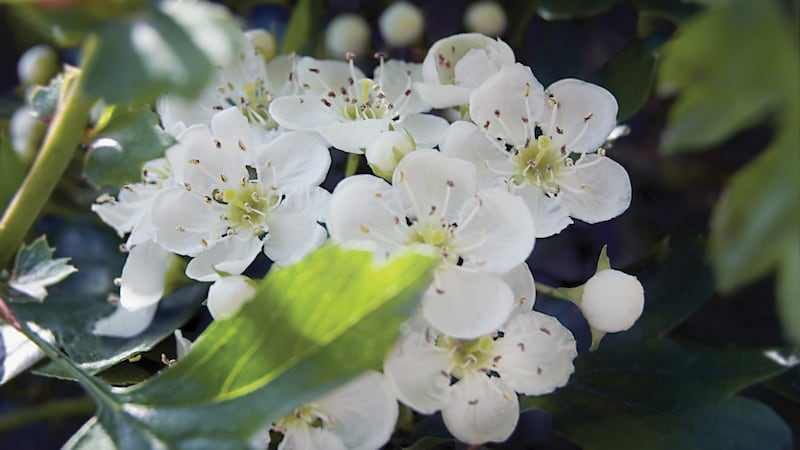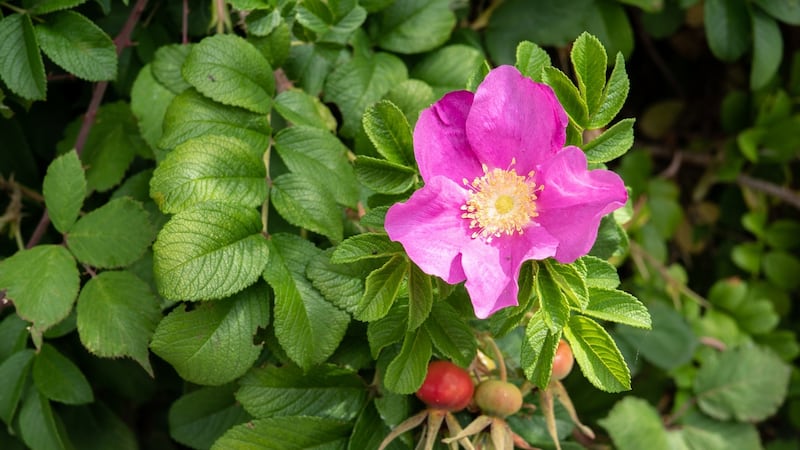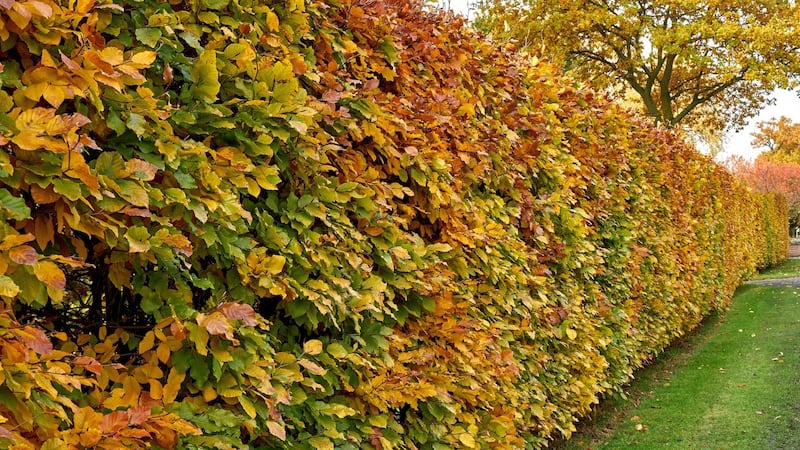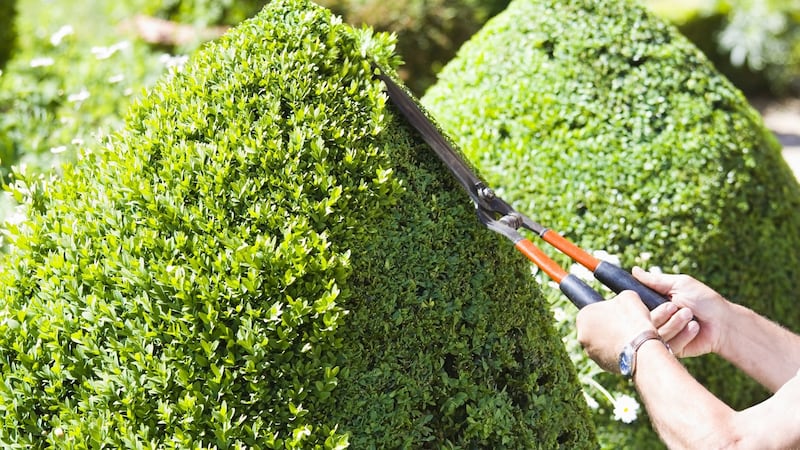Look up the dictionary definition of a hedge and what strikes you is the surprising variety of roles that these living boundaries play within our gardens. We use them to divide, define, enclose and embellish our outdoor spaces, as well as to provide shelter and privacy and to screen ugly eyesores.
Chosen carefully, the right hedge can also act as a natural shield against wind, filter noise and air pollution and/or act as a deterrent to anti-social activities such as theft and burglary (penetrating a tall, thorny hawthorn hedge is no easy task) as well as accidental damage from livestock. Which is to say nothing of the significant role that hedges play in moderating the effects of climate change or as complex, habitat-rich ecosystems that are hugely supportive of biodiversity.
I use the words “chosen carefully” because a badly chosen hedge selected without proper regard for your garden’s growing conditions as well as the particular species’ eventual height, spread and its maintenance requirements can end up being a costly waste of time, money and hard work.
So before making your final selection, take time to consider important factors such as soil type, aspect, local climate and eventual size (especially in terms of the potential shade it will cast once mature). Also bear in mind ease of access in terms of tools and machinery plus any potential routine costs that may be a factor when it comes to keeping it regularly trimmed (if it’s a very tall hedge, for example, will you need to use a ladder or scaffold to trim it, or to pay for a landscape contractor to do it for you?).
These factors aside, weigh up the more abstract but equally important elements such as how well your chosen variety of hedge will fit within your garden’s overall design and the larger landscape surrounding it.
Whichever species you plump for, this is an excellent time of year to plant a hedge, with a huge variety available from Irish garden centres and nurseries as bare-root, root-ball and container-grown plants. See below for some inspiration.
1. Portuguese laurel (Prunus lusitanica)

An elegant, evergreen hedge that’s a favourite with garden designers because of its classic good looks, resilience, hardiness and ability to tolerate shade as well as air pollution, Portuguese laurel is a great choice for a medium to large garden. Seek out the variety known as Prunus lusitanica ‘Myrtifolia’ (also known as ‘Angustifolia’), whose smaller leaves and dense growth habit makes it particularly suitable for tight clipping and topiary.
It is happy in sun or partial shade and impressively tolerant of a wide range of soil types other than waterlogged. Its pale, fragrant spring flowers are loved by pollinating insects. Grown as an informal hedge, it can slowly reach a height and spread of five metres or more but can be easily kept to a more compact height and spread of two metres with a twice-yearly clipping.
Alternative? Yew (Taxus baccata), another classic, medium to large, hardy evergreen hedge that will happily tolerate shade and urban pollution and a wide variety of soil types (including both acid and alkaline) just as long – and this bit’s important – as they’re free-draining.
2 Hawthorn (Crataegus monogyna)

One of our loveliest native species,which combines rugged good looks and several seasons of interest with a capacity to endure the harshest of growing conditions, while its super-thorny branches also discourage unwelcome intruders, both animal and human.
This deciduous hedge, supremely supportive of wildlife and absolutely at home within the Irish rural landscape, is a brilliant choice for a medium-sized or large informal country garden. Tolerant of exposed coastal conditions and happy in full sun or partial shade and all except very wet soils, a hawthorn hedge can be grown to a height and spread of anywhere between one and six metres.
Alternative? Field maple (Acer campestre) makes a great, wildlife-friendly, deciduous hedge, tolerates a similarly wide variety of growing conditions, including those of exposed coastal gardens and offers similar seasons of interest.
3 Olearia (Olearia x hastii)
The go-to hedge for anyone with a seaside garden, this super-resilient, silver-grey leafed native of New Zealand happily tolerates the challenges of coastal growing conditions just as long as it’s not exposed to very cold winds. Great as a lowish-growing, informal evergreen hedge, it also takes hard clipping if a more formal hedge is required. Needs full sun and a free-draining soil.

Alternative? Rugosa rose (Rosa rugosa), a hardy, informal, flowering hedge that also tolerates seaside conditions.
4 Hornbeam (Carpinus betulus)

Picture an ultra-sleek, pared-back, slimmed-down version of beech hedge and you’ll have a good idea of the singular charms of this fast-growing, deciduous hedge. It is very hardy and tolerant of a wide range of growing conditions including damp, heavy clay soils and windy sites. It also doesn’t mind being sharply clipped, making it a great choice for more formal gardens.
Alternative? The aforementioned beech (Fagus sylvatica) but bear in mind that it’s not as tolerant of heavy damp soils.
5 Box (Buxus sempervirens)

True, its vulnerability to box blight means that this slow-growing, hardy, evergreen hedge needs plenty of TLC in the shape of a carefully timed pruning regime and regular foliar feeds during the growing season of liquid seaweed or a product such as TopBuxus. And yes, it’s awfully overused by lazy landscape architects and designers who like to shoehorn it into every urban garden that they can. But the truth remains that nothing really comes close to a neatly clipped box hedge in terms of its good looks, its versatility, its impressive capacity to tolerate very hard clipping and its ability to architecturally define the smallest of garden spaces.
To keep it happy, make sure to give it a fertile, moisture-retentive but free-draining soil (it hates to sit in winter wet but also suffers badly in very dry, hot soils in full sun), spread a top-dressing of a slow-release, organic granular fertiliser around the roots in spring and liquid-feed the foliage monthly during the growing season. Prune only once yearly in July, choosing a dry, bright day to minimise the chances of box blight entering through any pruning cuts. Best in light shade, this slow-growing hedge can be kept to an ultra-compact height and spread of just 30cm but is happier at 45cm x 45cm.
Alternative? In gardens where box blight is a serious problem, use the slow-growing compact evergreen known as Japanese spindle (Euonymus japonicus ‘Microphyllus’).
THIS WEEK IN THE GARDEN

November is a good time of the year to take hardwood cuttings of roses, fruit bushes and deciduous trees and shrubs, once they’ve dropped their leaves. Using a sharp, clean secateurs, select young, straight growth (15-30cm long) from a healthy parent plant. Remove the soft tip, making a slanted cut to identify which way up the cutting should go, then insert the cuttings vertically around the edges of a two-litre pot filled with a very free-draining multipurpose compost. Make sure that the bottom two-thirds of each cutting is buried. Firm in, water and label, giving the date, name and/or a brief description of the parent plant and the garden it came from.
Colder temperatures are a sign that it’s a good time to plant tulip bulbs, which are best planted after soil temperatures start to fall in late autumn in order to minimise the risk of viral and fungal disease attacking them. But if heavy rain has made the ground very waterlogged, it’s best to hold off planting until conditions improve. To encourage the bulbs to fatten up and give them the best chance of flowering again in subsequent years, tulip bulbs are best planted quite deeply (20cm) into fertile, free-draining soil.











